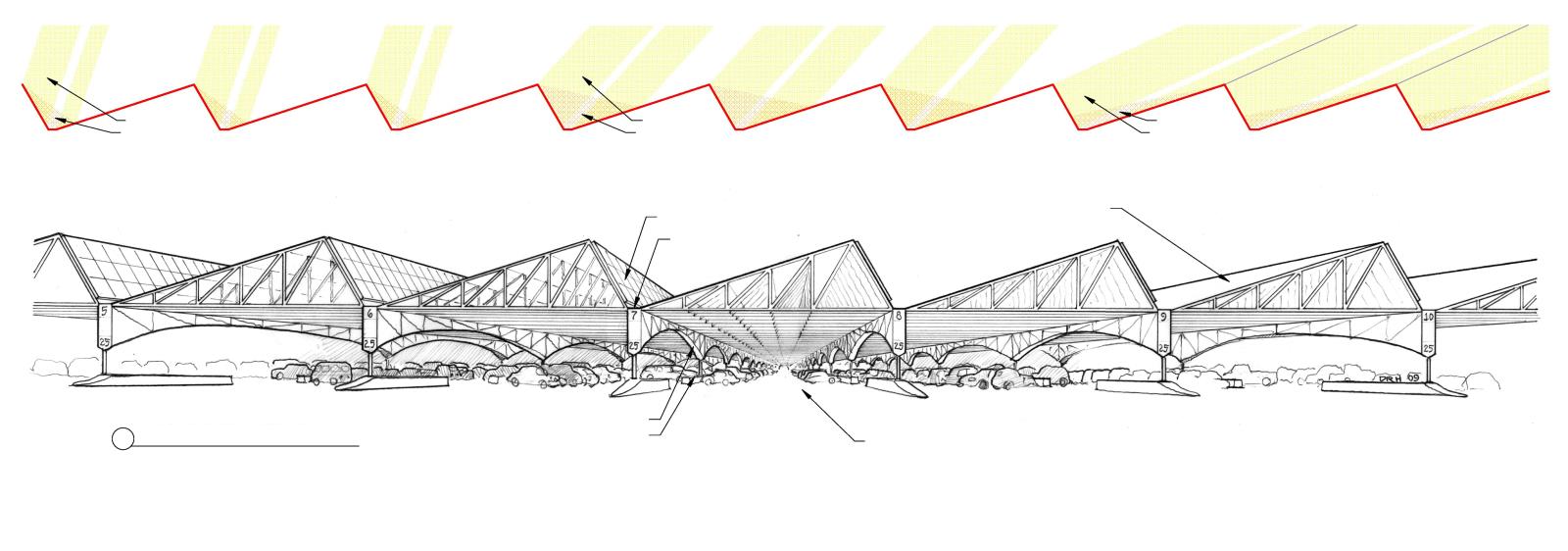PHOTOVOLTAIC ENERGY AND SUN’S HEAT
PUBLIC vs. PRIVATE ENERGY
The Sun bathes the Earth in energy. It is possible to harvest some of the ambient energy in a place for human use. Heat collection, and conversion of light into electricity are two of the ways our culture possesses the technology to use the sun’s energy.
Photovoltaics is the conversion of light into electricity.
Solar radiation turns into heat as it is absorbed by surfaces exposed to the sun. Heat collection is the technology of moving the heat produced by the exposure to sunlight into the service of society.
Production of electricity from the sun using photovoltaics is still costly enough that solar cells do not compete, strictly economically, with conventionally produced electricity. Photovoltaic arrays are generally optimized to get the most favorable , concetrated exposure to the sun to offset this disadvantage.
The challenge of heat collection from solar radiation is the general lack of need of heat when the sun has already warmed the environment and when the environment is not warm, the amount of solar radiation is generally diffuse, making it necessary to concentrate the energy excessively in order for it to be of good use.
A place for photovoltaic production should be completely open to the exposure of the sun. Residential areas are never truly open to the sun for the following reasons: Property sizes are generally too small to be able to control air rights to required solar angles. Trees, which are a residential blessing, are blockages to solar exposure. A good residential development addresses multiple planning issues; not only solar exposure of roof surfaces. Residential areas would not be optimal places for economical photovoltaic arrays.
Due to their sheer size and monolithic use, commercial developments with large parking fields do indeed control air rights and solar angles as would be optimal for photovoltaic arrays. Such areas and the public would benefit from the shade of a structure which would raise a photovoltaic array as a ceiling above the commercial use: Cars, people and buildings would be shaded from solar heat gain. Clean rain water could be collected before it mixed with polluted vehicle surfaces. Snow would be intercepted before it accumulated on vehicle and walking surfaces. The public could obtain these air rights and maintain a photovoltaic production system for the public good.
The electricity produced would be put into the public electrical grid. The infrastructure needed to convert the raw electricity into the current we use would be concentrated, substantial and professionally maintained for the public. Balanced with all the benefits of the sustainable energy with the secondary benefits of the infrastructure, the total cost of the energy would be easily justifiable. The public would directly benefit from the public expenditure.
Heat collection is a much more sensible method of deriving use out of ambient energy privately in residential areas. Look to the relationship of the earth mass to the sun’s rays.
All surfaces which are exposed to the sun heat up. Up to a certain point, the heat is beneficial just as it is. Beyond that point we feel uncomfortable, and we remove heat from our environment with air conditioning. This is heat we would want later. If we exhaust our unwanted heat into the earth mass, it seems to disappear, since the amount of heat is so small in relation to the size of the earth mass. But it is there nevertheless. The earth mass stores enough heat that during times when we are cold, enough heat can be taken from the earth and concentrated to make us (and our buildings) warm. The net change to the earth, over a given cycle is the difference of heat given into the earth via summer air-conditioning from the heat taken from the earth during the Winter. The cost of such heat (and cooling) is the cost to move the heat using heat pumps, doing their work in a favorable operating range.
The net change to the earth, over a given cycle is the difference of heat given into the earth via summer air-conditioning from the heat taken from the earth during the Winter. The cost of such heat (and cooling) is the cost to move the heat using heat pumps, doing their work in a favorable operating range.

direct sunlight
reflected light
direct sunlight
reflected light
direct sunlight
reflected light
View of Sheltered Parking Field
Photovoltaics as a Municipal Utility
photovoltaic panels
expanded metal
service walkway
Expanded metal service walkway strains precipitation before it reaches the ground.
rainwater falls between trusses
rainwater is captured
in sand filter / auto barrier
Rainwater is collected before it is contaminated
by contact with the oil and chemicals on the parking surface.
Collected rainwater is available for municipal use.
One publically created system which directly feeds the existing electric grid, large enough to merit its own maintenance and monitoring team in a place and at an elevation which protects its permanent unobstructed access to the open sky.
A
Parking field is protected from the direct sun and precipitation.
There would be no need for snow removal or disposal.
reflective, translucent roof surface
Solar panels are mounted at a steep angle to optimize winter exposure, minimize snow build-up and expose panels to reflected light from the surrounding roof area.
Summer Solstice
Sun at noon ~71.5 degrees
Equinox
Sun at noon ~48 degrees
Winter Solstice
Sun at noon ~24.5 degrees

to Gallery